Vallisneria aquarium plant: planting, care and maintenance
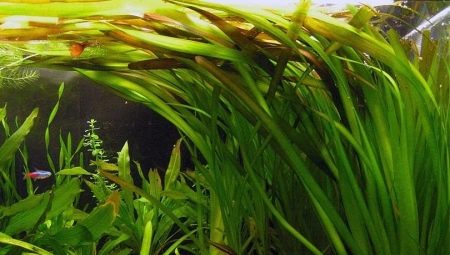
To normalize the emotional atmosphere in the house or work space, as well as to attract financial well-being and stability, interior designers recommend installing artificial reservoirs - aquariums. In order for this item to bring exclusively benefit and positive emotions, it is necessary to deal with all responsibility not only with its selection and installation, but also with its design.
In modern specialized stores for this event, you can purchase a wide range of products for various purposes, including seaweed. It is from aquatic plants that the aesthetic appearance of the reservoir depends, and the amount of time that the owner will devote to maintaining order in it depends on the technology of caring for them.
To minimize this indicator, professional aquarists recommend paying attention to the unpretentious aquatic plant - vallisneria.
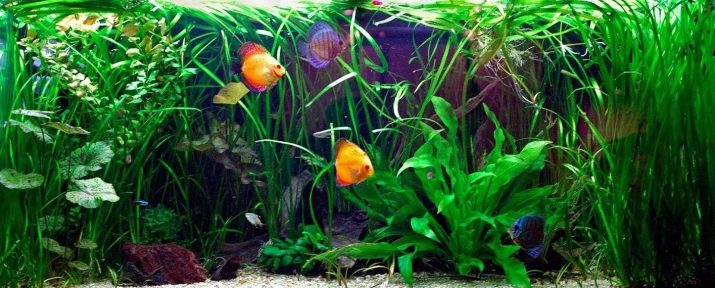
Description
Vallisneria is a perennial aquarium plant that belongs to the Vodokrass family. Under natural conditions, this species grows in the tropics, subtropics and regions with a temperate climate. The aquatic plant feels comfortable in all types of water bodies. Due to its decorative appearance, wide range of colors and various forms, Vallisneria has become a demanded and popular plant among aquarists.
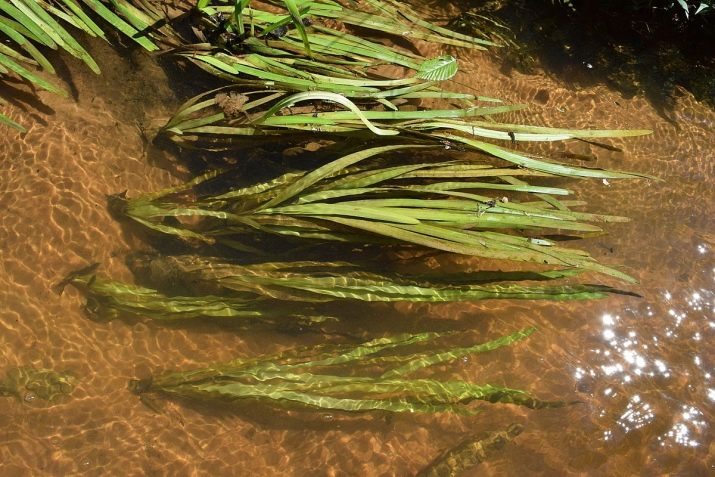
The appearance of the culture resembles long ribbons, which, growing to the surface of the water, begin to creep along it.
The size range of leaves ranges from 50 cm to 2 meters, and their color can be either just green or green with a reddish tint. The thin and flexible root system can be up to 10 cm long. Leaves and whiskers originate at the very root collar.
Due to its belonging to dioecious plants, Vallisneria has inconspicuous and unattractive flowers, which consist of small corollas with white leaves and a yellow center, collected in tall inflorescences.
Due to the fact that the length of the plants exceeds the depth of the reservoir, they are pollinated, after which all the female inflorescences fall under the water, where the polyspermous capsule ripens and opens.
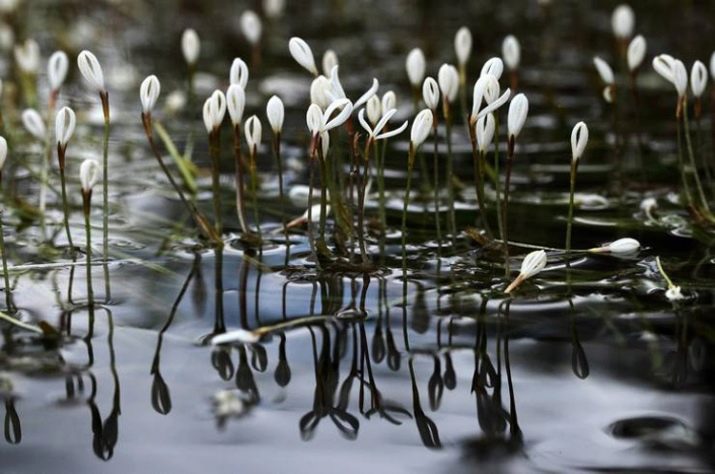
Advantages and disadvantages
Like any plant, Vallisneria has a number of advantages and disadvantages.
Advantages:
- high aesthetic performance;
- fast production of young shoots;
- unpretentiousness;
- purification of water from harmful and toxic substances;
- oxygen enrichment of water;
- the presence of several subspecies.
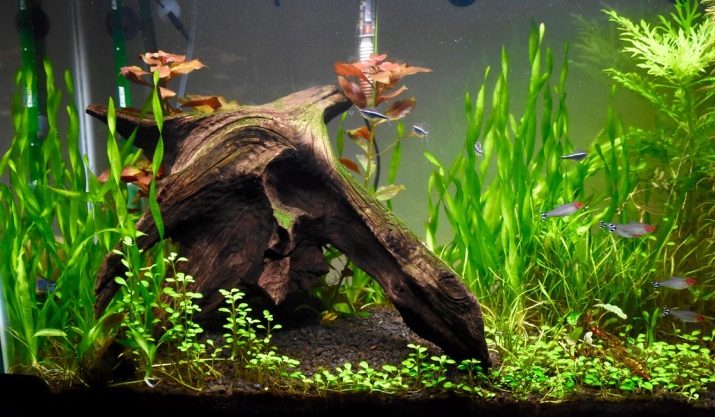
Disadvantages:
- the need for regular thinning;
- the inability to grow in water containing heavy metals;
- the need to use additional lighting.
Views
In their natural habitat, biologists have more than 10 species of this alga, which differ in the following indicators:
- length and width of the sheet plate;
- color spectrum;
- type of veins;
- leaf shape.
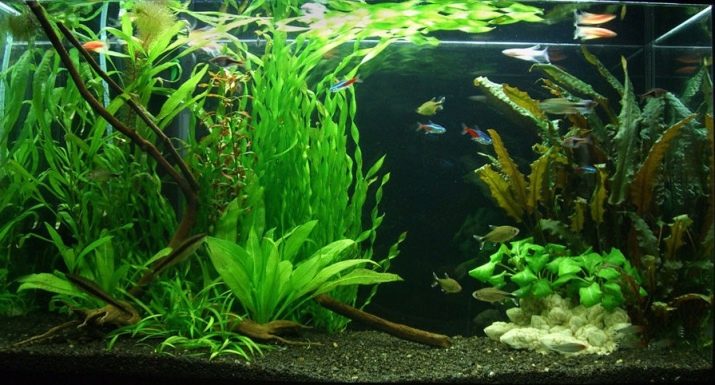
The main feature of Vallisneria is a change in appearance after a change in habitat.
For landscaping home ponds and artificial ponds, you can use different types of vallisneria.
- Spiral - a beautiful plant, the female peduncles of which take the form of a spiral. The maximum height of sheet plates with finely serrated edges is 90 cm, and the width can be up to 15 mm. The pollination process takes place on the surface of the water due to direct contact between female and male inflorescences.
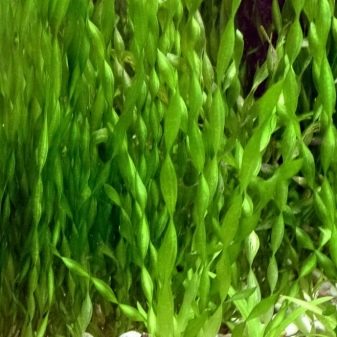
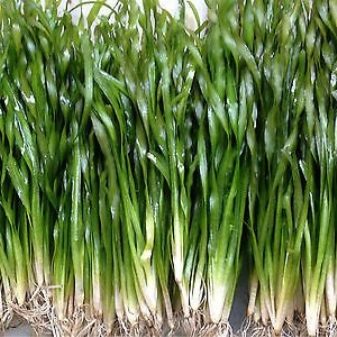
- Giant - a tall plant with rich green leaves that grow in whole bunches. The maximum height of the sheet plates is 2 meters, and the width can be up to 40 mm. This type is only used for very large household containers or decorative ponds. To prevent clogging of the aquarium, experts recommend planting this algae only in the corners of the tank or parallel to the back wall.
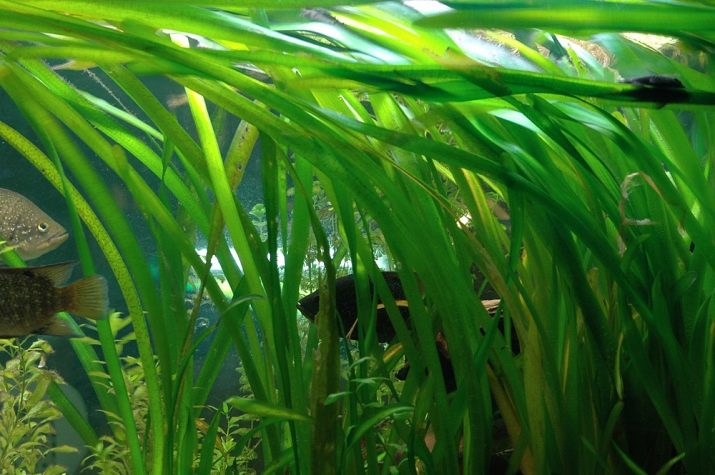
- Tiger - a beautiful view, on the surface of the leaves of which black dots and stripes are clearly visible, reminiscent of the print of a tiger's skin. It is thanks to this feature that the subspecies got its name. The height of pale green leaves does not exceed 100 cm.
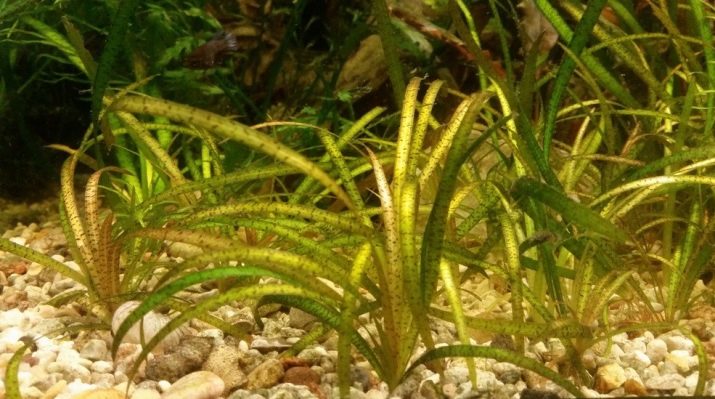
- American - small-leaved subspecies, in one rosette of which a large number of leaves are formed, resembling soft ribbons in shape. Serrated edges can be seen on all sheet plates. Red spotted shapeless blotches are visible on green leaves. In comfortable growing conditions, the height of the leaf can reach 1 meter, and its width is 25 mm. This subspecies is widely used for decorating the back wall of transparent aquariums.
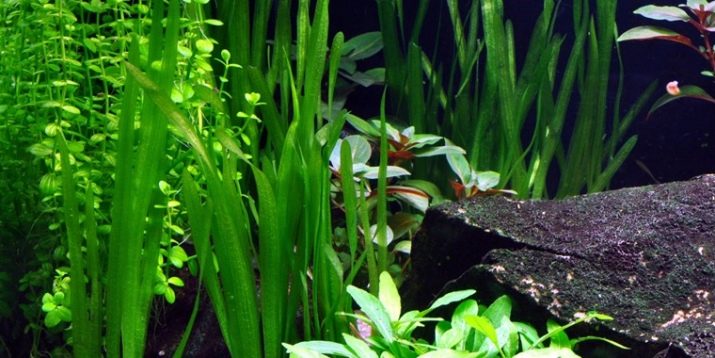
- Asiatic - a subspecies native to Asia (Japan). The maximum height of a bush is 50 cm, and its diameter can be up to 10 cm. To improve aesthetic performance, florists recommend planting 2-3 bushes at the same time.
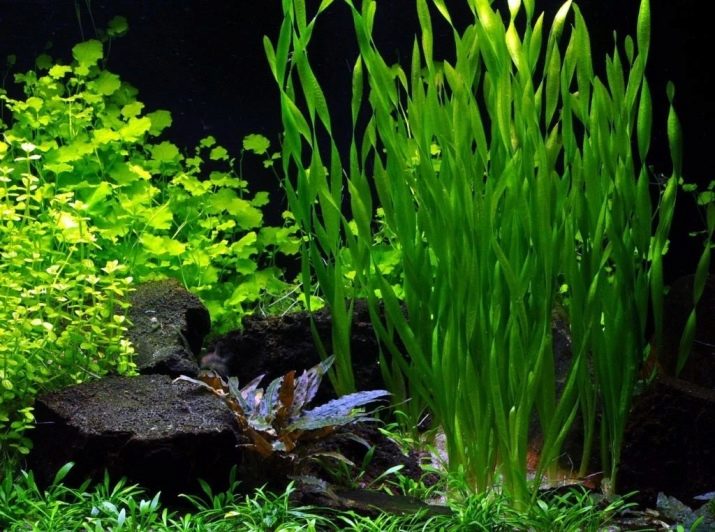
- Vallisneria nana - a dwarf subspecies, has very thin leaves of a rich green hue. The maximum plant height in artificial reservoirs is in the range from 30 to 50 cm, but in nature you can see algae up to 70 cm high.Thanks to their compact arrangement and low height, algae do not interfere with the penetration of light into the aquarium and do not become an obstacle to the free movement of fish.

Growing
Despite the high level of decorativeness, this variety of algae is an unpretentious plant that needs a minimum amount of attention and energy. Vallisneria is the ideal plant for the beginner hobbyist, who, having acquired a small bush of this algae, will be able to get a large number of young shoots without much hassle for landscaping their home pond.
Due to the high intensity of algae growth, its content consists of regular feeding, weeding and thinning of green spaces.
The most suitable soil for young shoots is coarse sand or medium gravel, the diameter of which should not exceed 0.5 cm. The thickness of the soil layer should not be less than 40 mm. Unpretentious algae does not need either peat or clay - settling suspension, fallen leaves and the remains of aquatic life serve as a breeding ground for it. The main thing is to leave the root collar on the surface of the soil during the planting process.

In order to get beautiful and healthy green spaces, florists recommend regular feeding.
In specialized stores, you can buy special fertilizers in the form of tablets or thick paste, which must be placed near the root system. A weekly change of 30 percent of the water also has a positive effect on algae. Additional enrichment of the plant with carbon dioxide can be omitted.
Basic water parameters:
- temperature range - from +20 to +25 degrees Celsius;
- acidity level - no more than 7 units;
- the stiffness indicator should not be more than 8.
To prevent stretching of the plantings and the appearance of fading, it is necessary to provide intensive illumination of the reservoir for 12 hours.

A filtration system must be installed in the aquarium, which will help remove the following impurities, provoking a number of irreparable problems:
- calcium salts - the formation of hard and brittle tips that quickly deform;
- rust - decay and death of a whole plant;
- antibiotics - a decrease in resistance to various diseases.
In order to reduce the density of plantations, it is necessary to constantly thin them out. Experts do not recommend partial cutting of sheet plates. This procedure can have a bad effect on the plant and provoke the death of the entire bush. It is better to completely remove the entire outlet along with the roots.

The following adverse factors can slow down the growth and reproduction of this algae:
- low temperature regime of water or frequent temperature fluctuations;
- low light level;
- the presence of incompatible plants in the same area;
- lack of micronutrients;
- the presence of nitrates and phosphates;
- the presence of medicines in the water for the treatment of fish and other types of algae;
- use of unfiltered water.
When cleaning and tidying up the aquarium, you must be very careful not to injure your hands on the very sharp edges of the leaves.
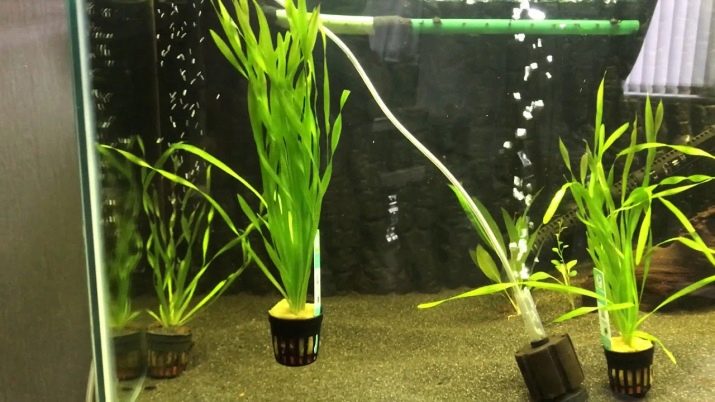
Reproduction
For obtaining young algae two breeding methods can be used:
- seminal;
- vegetative.
The seed method provides for the joint planting of male and female specimens, which must be pollinated on the water surface during the flowering period. After a while, seed boxes form on the female algae, which gradually sink into the water and open up there, throwing the seed material into the ground. This method is not popular and is used very rarely.
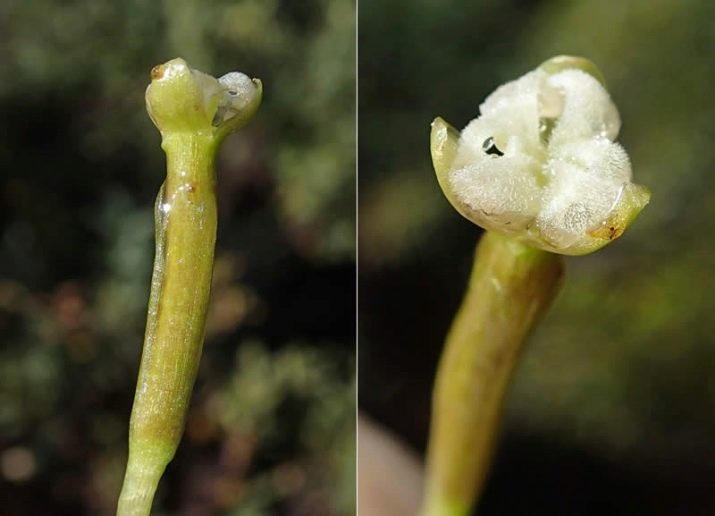
For home reproduction, it is necessary to pay attention to the vegetative production of new plants, which involves planting young shoots formed on the whiskers in the ground.
Florists recommend that you first bury small children without separating them from the mother bush, and only after several new leaf plates appear, you can safely cut them from the mustache and plant them in the planned place. Thanks to this method, it is possible not only to obtain a large number of young algae, but also to green large water areas in a short period of time. Within 12 months, about 100 shoots can be planted from one bush.
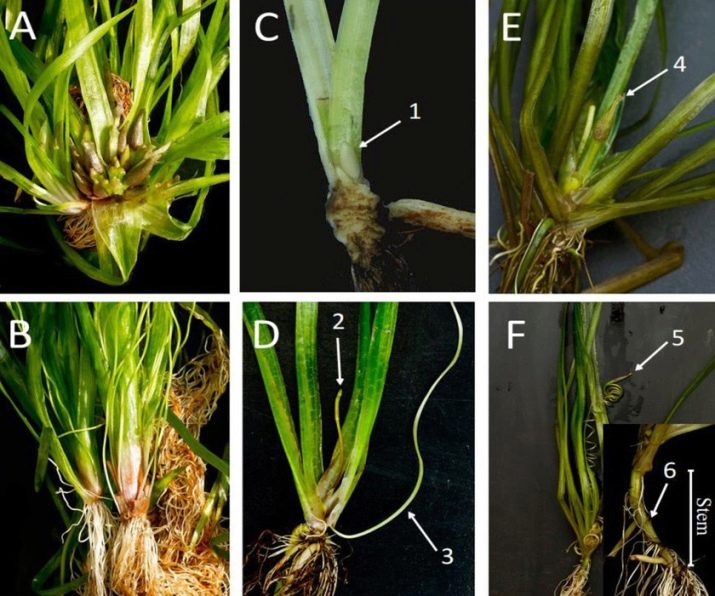
An aquarium with live fish and algae is as much a pet as a cat, dog or parrot. In order for all inhabitants of an artificial reservoir to feel comfortable and delight their owners, it is necessary to apply a considerable amount of effort, time and financial resources. Before you go to the store, you must carefully study all the rules for caring for the inhabitants of a home reservoir.
The following video will tell you about the features of the content of vallisneria.








